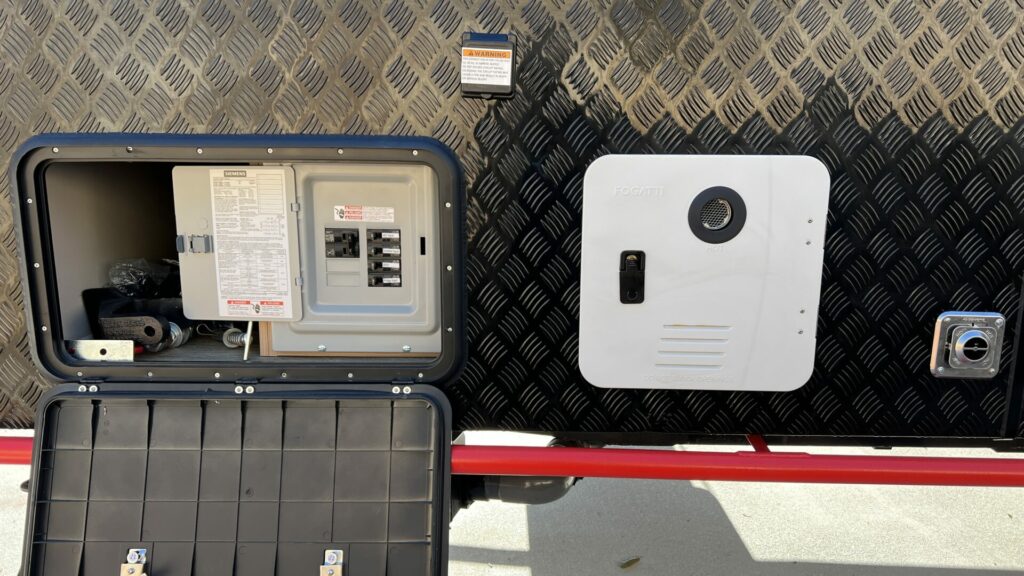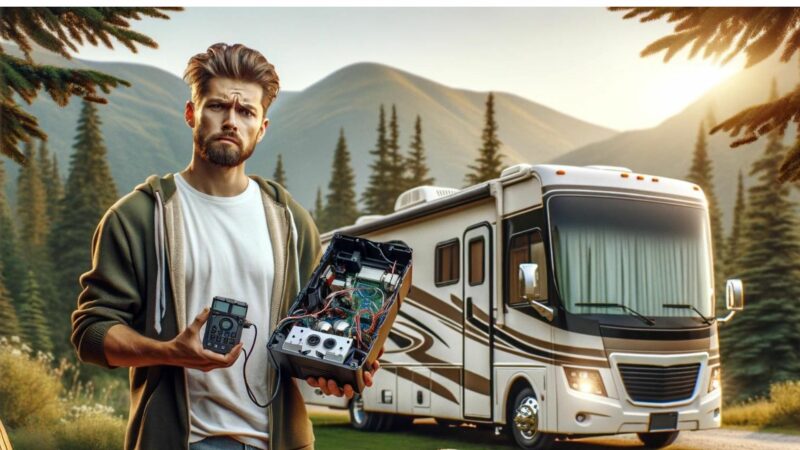Table of Contents Show
RV upgrades are generally a great way to make your rig more comfortable and user-friendly. However, some of these enhancements actually do the exact opposite.
As we’ve walked inside and around hundreds of campers over the last several years, we’ve noticed a thing or two. Unfortunately, we’ve found several RV upgrades that are downright awful.
Today, we’re sharing some features we think aren’t as good as they sound. Will you feel the same?
Let’s look and see!
RV Manufacturers Are Making Changes
Over the last several years, we’ve seen significant changes in the recreational vehicle industry. More and more people are buying campers and enjoying adventures in them. As a result, how people use and what they expect from their RVs has changed significantly.
If there’s one thing that RV owners know how to do, it’s to share what they love and hate about their rigs. Manufacturers will make major changes, especially when they hear the same complaint from multiple owners. Some will even halt production and make the necessary adjustments to address the issue.
For example, one common complaint from RVers was that they were tired of dark interiors. Many wanted to see a lighter and brighter interior, and manufacturers listened. You can now find plenty of manufacturers who have embraced brighter color schemes and interiors. Farmhouse-style interiors with white cabinets are becoming increasingly common.
Unfortunately, as you’ll soon see, not all RV upgrades are a homerun with consumers, some of the improvements are a swing and a miss.
Some Upgrades Are Disappointing
Manufacturers try to be in tune with what consumers want and need in campers. However, the finished product sometimes doesn’t deliver the results that manufacturers and consumers would like to see.
These attempted improvements can overcomplicate things that should be simple or introduce problems that didn’t exist before.
This can be incredibly frustrating for consumers who spend a pretty penny on a fancy new rig. When they discover that their camper isn’t as perfect as they thought, they experience buyer’s remorse.
It’s no wonder why many manufacturers have teams of customer service agents to deal with these unhappy campers.
RV Upgrades That Are Actually Awful
The RV industry moves at breakneck speed as manufacturers release new models year after year.
While trying to defeat their competitors and answer customer demands, some manufacturers choose upgrades that aren’t all that great. Here are some RV upgrades that aren’t always worth it.
Lights Everywhere
RV manufacturers think that the more lights they install, the better. You’ll find LEDs in cupholders, under cabinetry, and on the front cap of the rig.
While we’re all for increasing visibility, many are simply there for aesthetics. Their sole purpose is to provide a “cool” effect or to look good in pictures.
Unfortunately, you won’t likely notice this issue while shopping for your next rig. That’s because most people visit dealerships during the day, and the massive number of LEDs is more challenging to see.
However, the interior of your camper can look like the cockpit of an airplane at night. It seems there are red and blue lights everywhere you look.
Fold Up Steps
The next terrible upgrade is the fold-up steps. One example of this is the Lippert Solid Step Triple Step. As the name indicates, these steps are solid and well-built. However, they can be a royal pain during your adventures.
The biggest problem with them is that they fold up inside your camper. If you’re not careful, dirt and debris on the stairs will get dumped inside your camper when closing them. As a result, you’ll need to sweep them off and clean them as the final step before closing up your rig. While this may not be a big deal, it’s another task on a long to-do list.
For us, the biggest issue we had with them was when it rained on moving day. We would need to put down a towel to soak up any water that dripped off them.
In addition, these steps can be a pain at some RV parks and spots where there’s not much space. They can require several additional feet of space between you and any obstacles. The design of these steps can make it impossible to get in your camper while it’s in storage.
We prefer the steps that fold up into themselves and keep all the dirt and debris outside your rig. These don’t require much space and make it easier for you to get in and out quickly.
Tankless Water Heaters
Many manufacturers have switched to tankless water heaters. This is mainly in response to RVers wanting to take longer and hotter showers inside their campers. While there’s nothing better than a long hot shower after a hike, these upgrades have hidden downsides.
One primary reason these are awful upgrades is that they require propane. Traditional RV water heaters utilize a tank that stores water. These allow you to use electric or propane to heat the water in the tank.
Why use propane when you’ve already paid for the electricity when you reserved your campsite? Unfortunately, tankless water heaters don’t give you that option.
In addition, tankless water heaters often require an increased water pressure to keep things operating correctly and efficiently. However, it’s no secret that some campgrounds are severely lacking regarding water pressure. As a result, it can be challenging to enjoy the “unlimited hot water” the salesperson sold you on at the dealership.

Auto Level
Auto level is one upgrade that many RVers get overly excited about. Dealerships talk about it like a magical button that takes all the worries away when setting up your camper. When it works right, it can be an incredible feature. However, while it can be helpful, it can also introduce severe problems.
While this has been a popular feature on fifth wheels for some time, we’re starting to see it more on travel trailers. Unfortunately, you’ve got to get your rig relatively level before it does any good. If not, you’ll lift your tires off the ground, which can be extremely dangerous on unlevel ground.
It can be a fantastic upgrade for those who use auto level correctly and safely. Sadly, we’ve seen many situations where individuals endanger themselves and others. When we see these issues, it’s an awful upgrade.
Touchscreens
Manufacturers have introduced touchscreens in many campers to eliminate many buttons and switches. You can control lights, temperature, and various other features from touchscreens.
Unfortunately, while these may look cool, we’re seeing and hearing complaints from the RV community. As you likely have experienced, technology is great when it works. However, it can often let you down when you need it the most.
Additionally, you now have multiple out-of-order systems if the touchscreen isn’t working correctly. You may be unable to turn on lights, retract slides, or extend awnings.
What would have been a minor inconvenience is now a much bigger deal.
Ducted A/Cs
RVs have been getting increasingly larger over the last few decades, and keeping them cool has become problematic. As a result, manufacturers turn to ducted A/C systems to push cool air into bunkhouses or throughout the rig.
Unfortunately, the efficiency of these units makes this an awful upgrade in most cases.
We know from experience that RV manufacturers try to direct air into the ducts via a piece of insulation that makes and area called the plenum that is normally not placed efficiently. This means the AC has to work harder to push air out and into the ducts.
We have also seen that this causes issues where the insulation gets pushed out of the way, and cool air is sent back through the intake, which would try and cool it again. Again, very inefficient since your RV air conditioner wastes time and energy trying to cool cold air again instead of warm air.
Pro Tip: Luckily, there is a fix to these issues that makes ducted A/Cs a great upgrade. It’s called Kool RV and forces the air into the ducts.
Windows That Don’t Open
The final item on our awful RV upgrade list is windows that don’t open. Consumers are asking for more windows to increase natural light and to enjoy the view.
However, some manufacturers responded by including windows, but ones that don’t open.
While these check the boxes for what some customers want, allowing them to open makes them more useful.
We love traveling in warmer weather and boondocking as much as possible. We often keep our windows and vents open to increase air circulation.
Having a rig with windows that don’t open creates some serious problems.
Are RV Upgrades Worth It?
Don’t get us wrong; we love RV upgrades as much as anyone. It’s been great to see manufacturers listen to the community and adjust based on the feedback. We understand that sometimes they’ll get it right, and sometimes they won’t. Luckily, if you don’t like something about your camper, you can do your own DIY RV upgrade.






